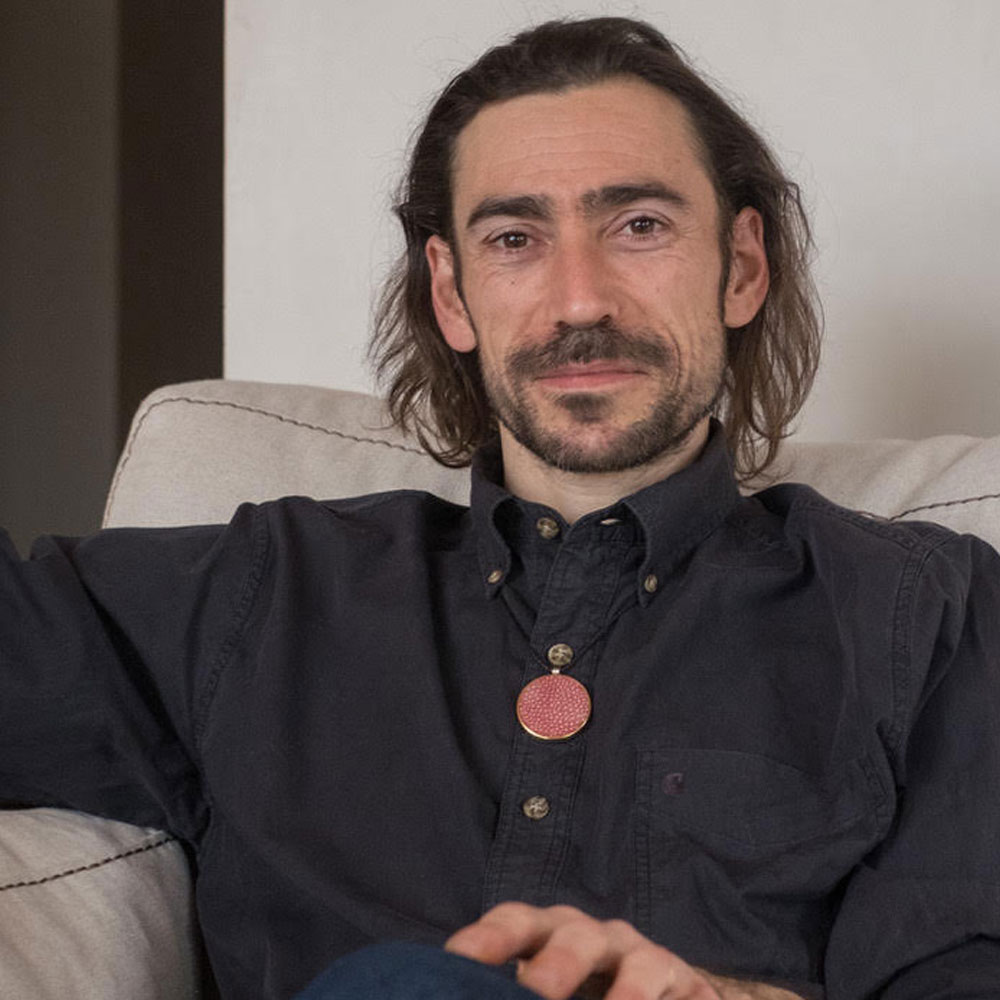Focus On: Alexis Delletery
Alexis Delletery is the founder of Maison Delletery. An atelier dedicated to the production of hand-made, unique items inspired by the Art Deco era.
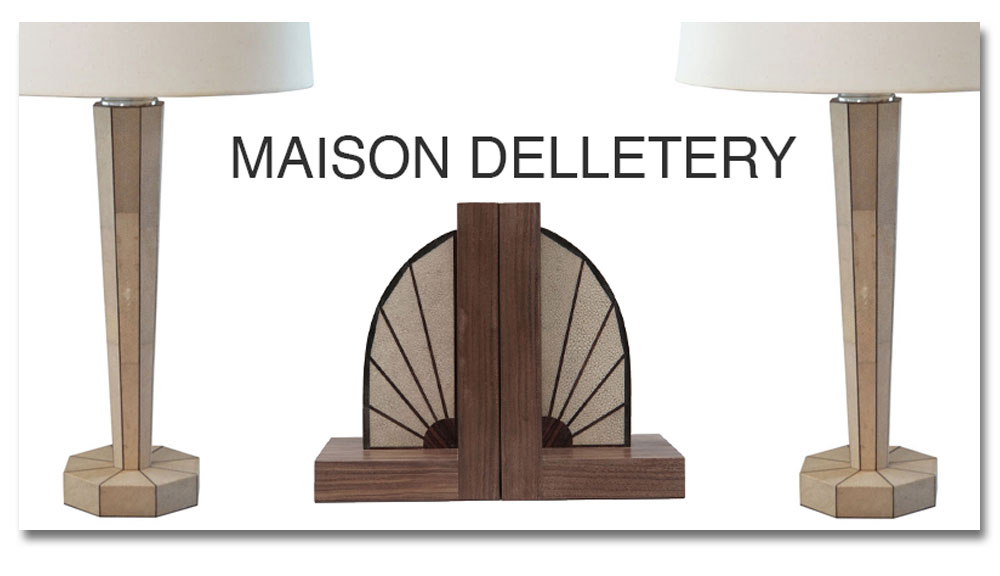
Welcome to December 2017 ![]() Focus On: Object Designer Alexis Delletery
Focus On: Object Designer Alexis Delletery
How did you first become interested in design?
I was born into an antiques family. My parents had an antique shop on Rue de Lille in Paris and I literally grew up in the store; they would take me to the store and put me in an antique cradle. Up to my teens, I would go with them to antique fairs and shopping trips, sometimes even missing school. Growing up in this environment, I developed my taste for art and decoration, but not only that, for me it is a necessity.
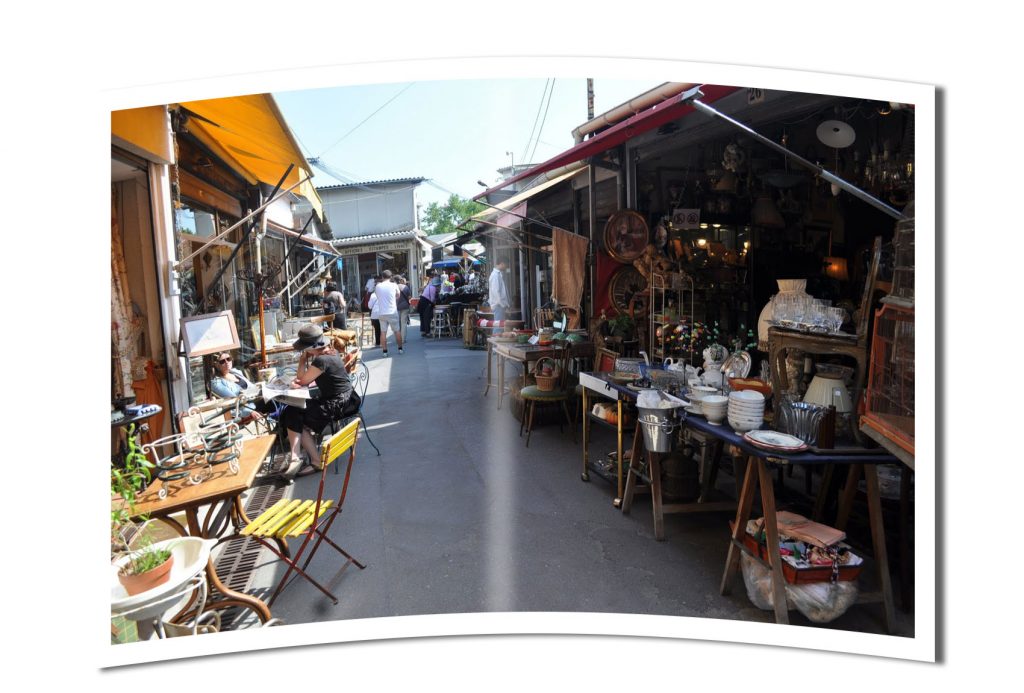
Then I graduated with a degree in Art History from the University of Sorbone in Paris. There, I extended my vision of Art that was more classical, particularly to Greek, Roman, Medieval and Renaissance periods. I saw different ways that creations could take forms to. Different answers artists could propose to the spirit or the needs that each era posed. With a big change happening after the industrial revolution artists and designers during the Art Deco period overthrew many rules. But still stuck with the most important one: functionality. This appealed to me and I started germinating the idea of creating some pieces of my own.
After the university, I took over my family’s antique business for a decade. And observed that times, crowds and needs are changing faster than anybody in the business would expect. I also wanted to use my creative side. The fact that many people want to buy things that are artistic and useful cemented my decision. I told myself that I will create objects to satisfy those who don’t necessarily want sixteenth or seventeenth-century antiques nor something mass produced. In fact, I want to create unique pieces for them. Creating something the way I envision it, through the design, the aspect, and the practicality is essential for me.
How did you come to choose shagreen as your medium for creating your objects?
I grew up surrounded by shagreen objects. In the antique business, we sold many pieces made with shagreen. Restoring some shagreen pieces also made me aware of the difficulty in working with the skin, and I always loved the beauty of this material. My grandfather was a “décorateur d’intérieur” in the 30s, 40s, and 50s. And worked with shagreen skins, as it was en vogue at the time. Discovering a few pieces of skins at my grandfather’s workshop, I was struck by the strength of the raw material and the softness when it gets a smooth finish. Given the opportunity, I decided to buy a bulk of shagreen skins from the late 50’s, raw, untreated and not tanned. Working with these old skins is very challenging, intensely laborious, and time-consuming, as these old skins are tougher than the new ones. But I like the challenge and the results.
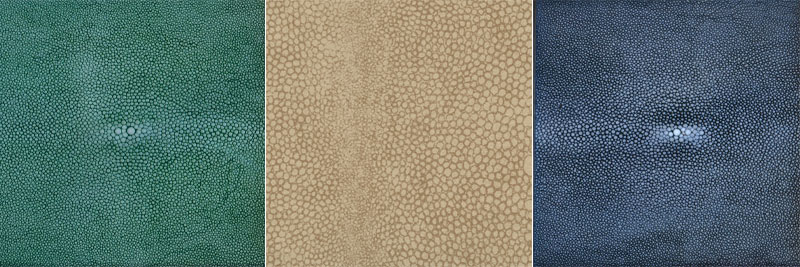
shagreen in green, natural and blue
Once I saw a pair of shagreen lamps by Karl Springer from the late 20th century, and I realized that there is still room for this material in the 21st-century design world. This pushed me to the last step of creation: realization.
Whose work do you turn to for inspiration?
I usually start drawing some ideas on a sheet of paper, trying to forget all what I know, which is impossible in fact. What you create reveals your knowledge. As I am classically trained, I wouldn’t call myself avant-garde.
Most of the time I end up with similar designs, in term of harmony, balance or aesthetics. With shagreen, you are more or less stuck to the substrates itself. You have to structure the substrates in the way you want the objects to form. You can wrap a substrate, lay it on a flat surface like a table or furniture. Or you can use it in a geometric way mixing it with other materials like exotic wood for instance. This last option brings you back to the Art Deco era, which I think is the period that highlights and enhances shagreen as a material. Designers like Clément Rousseau and Ruhlmann created in this field, and it is hard to not have been influenced by masters like them.
The danger is to produce something that looks déjà vu, or worth a copy. So you have to always question and search for new ways to produce your objects.
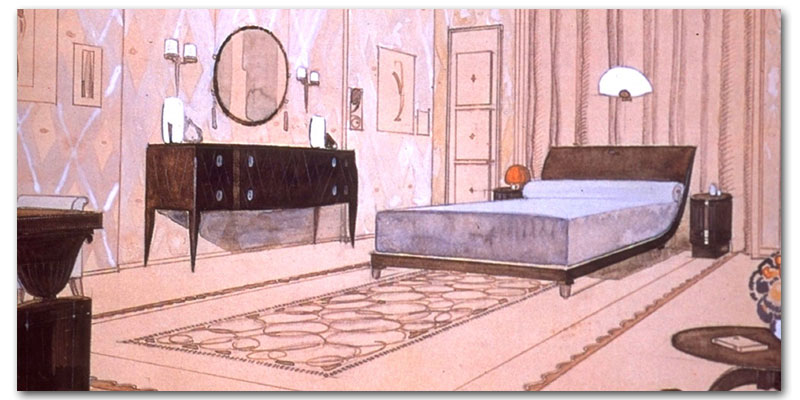
You create mirrors and table lamps which are available through Sutter Antiques in Hudson, NY. Are there other objects of art that you’re currently working on? If so, where can we find them?
I am currently working on a lamp for a client – a custom order. It’s an ideal situation as I like to discuss different ways to design something. The end product is truly unique designed with the client in mind.
I also work on jewelry using the scraps of skins and was once asked to do a pair of earrings as a custom order. People really appreciated the look and the spirit of my design, so it encouraged me to develop a small line of jewelry. Each piece is individually handmade. I am now using exotic woods or metals like copper, brass, and aluminum along with silver but I am considering using precious metals and gemstones to take it up a notch. Selected pieces are available at Chestnut Wood Working Showroom in Kent, CT. You can also visit us on Etsy at Alexis Shagreen Shop. Any feedback or suggestions are welcome.
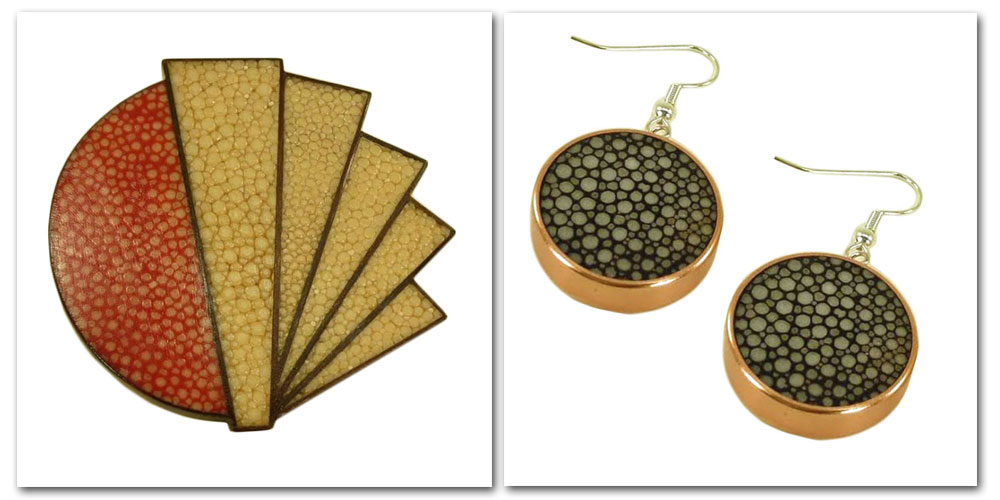
Left: Art Deco-inspired pin filled with red resin and segmented by rosewood. Right: Black resin and shagreen with copper trim earrings.
What sort of response have you had to your work?
I did a local art fair in Connecticut this past summer. I was struck by people’s curiosity for shagreen skins and how much they appreciated a hand done, one of a kind piece. Sometimes I had to explain the lengthy and manual process to produce my pieces, from cleaning the skins to the final work, and I think people better understand the effort that goes into the production, which explains the price for the pieces. The feedback was overwhelmingly positive and encouraging. I am looking for more ways to connect with clients and designers in this way.
Where do you see your business in five years?
I would like to continue to challenge my designs and skills. I have more design ideas than I can find time to produce. Perhaps in five years, I will realize many of my ideas…! I am planning to develop a line of small furniture like side tables, pedestals, dresser mirrors, etc., anything that is beautiful but useful in everyday living that really enriches interior decorations.
It would be interesting to see if my ideas to produce more upscale jewelry finds a good audience. So far the signals are good that people want handmade, unique pieces. I plan to maintain my artistic and artisanal spirits so I would like to balance the scale of production to the business needs. But it would be good to reach a wider audience across the country. And perhaps find presence in a few international markets. My pieces may be available in Paris soon and I hope to deepen my collaboration with Sutter Antiques. To contact Alexis Delletery please email him at maison.delletery@gmail.com

